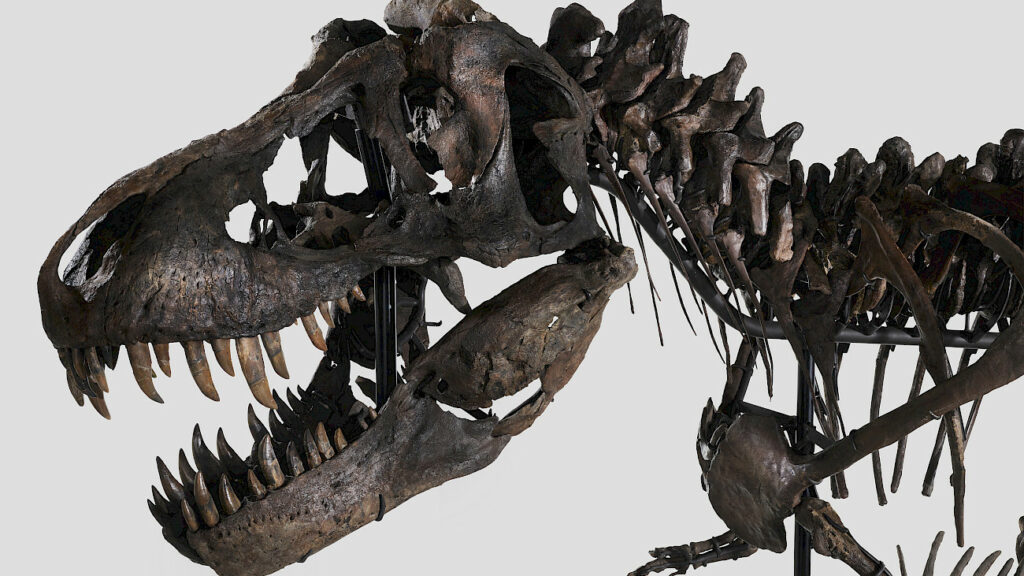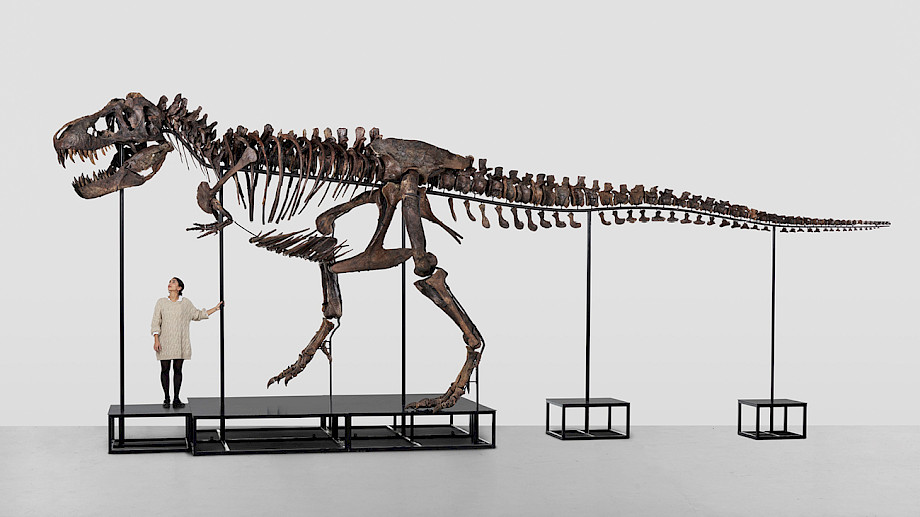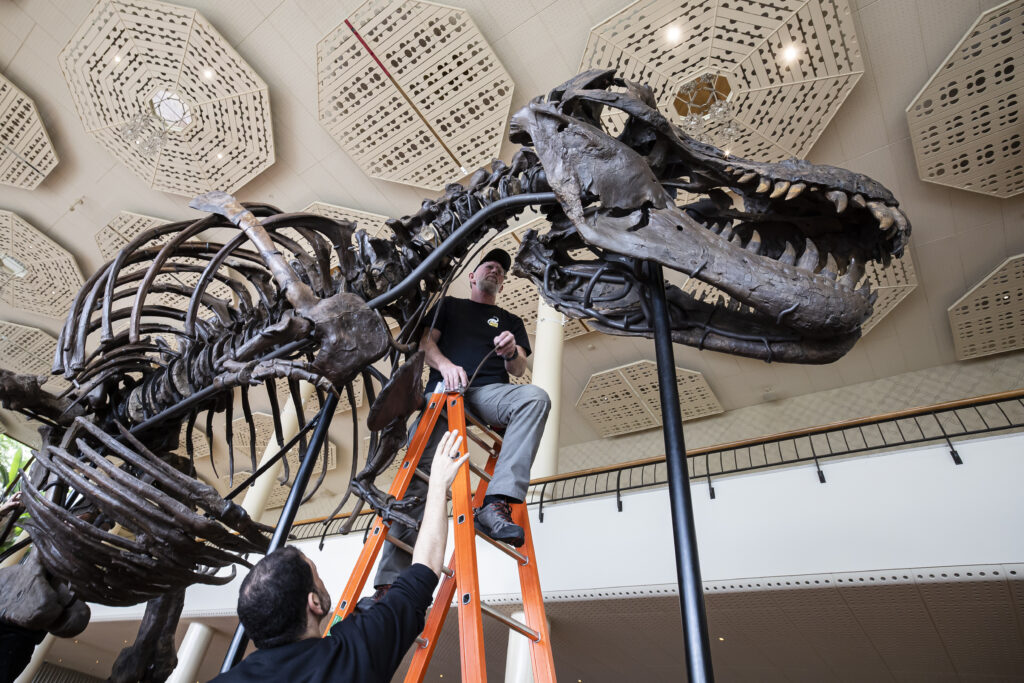mar, Mar 28th 2023

The skeleton of a Tyrannosaurus Rex dinosaur named “Trinity” goes on display tomorrow in Zurich before it is auctioned off next month in what is being called a controversial sale in the world of paleontology.
At an astonishing 11.6 meters long and 3.9 meters tall, 67-million-year-old Trinity is one of the most spectacular T-rex skeletons in existence. And according to paleontologists, Trinity is believed to be the first Tyrannosaurus Rex ever to touch Swiss soil, dead or alive.
The fossil’s starting bid, in what organizers are calling the Out of this World auction, is listed at 5 million francs – but experts believe the final sale price will be much steeper. Stan, the last T-rex skeleton to go under the gavel in 2020, fetched an incredible $31.8 million, making it the most expensive fossil ever sold.
The skeleton of Trinity was assembled from three specimens excavated from 2008 to 2013 in the Hell Creek and Lance Creek formations in Montana and Wyoming.
Although only 50% of the bones are original, Koller, the Swiss auction house selling Trinity, says the skeleton is “among the finest known unearthed specimens of one of the largest terrestrial predators that ever roamed the earth.”
It’s Trinity’s incredibly well-preserved skull, which comes from a single specimen, that makes the skeleton so desirable.
“Dinosaur skulls are very rare; they are among the most valuable components of fossil skeletons,” says Scientific advisor Nils Knötschke, one of the world’s leading fossil preparators.
Each of Trinity’s 293 bones had to be painstakingly unearthed, prepared, cleaned, and restored before the mounting could take place. This process can take seven to ten years – it’s a massive effort for a team of paleontologists, preparators, conservators, and other specialized professionals in the fossil field.
“The quality of the preparation and mounting work is what really counts in the value of a dinosaur,” explains Dr. Hans Jakob Siber, Palaeontologist and head of the Aathal Dinosaur Museum in Switzerland.

The sale of rare specimens like Trinity isn’t without criticism from scientists and paleontologists. According to the scientific publication Nature, only 32 adult T-rex specimens have ever been found. It is the first auction of its kind in Europe and only the third in the world.
Auction sales of dinosaur skeletons and other fossils have raked in tens of millions of dollars in recent years. It’s an enormously lucrative business, but experts warn the trade could be harmful to science by putting the specimens in private hands and out of the reach of researchers.
In countries like Mongolia, dinosaur fossils are considered to be part of the nation’s shared cultural heritage – regardless of where they were found. But the US only restricts the collecting of fossils on public lands, meaning fossils discovered on private property belong to the landowner.
And this was the case for Trinity, Stan, and Sue, the only three T-rex skeletons to ever be sold at auctions.
It’s unknown exactly how much paleontology is done on public lands versus private lands. American fossil hunters who dig on private land aren’t required to report what kinds of specimens they have delivered to private collections. In the case of T-rex skeletons, some paleontologists estimate that as many as 80 T-rex skeletons have been unearthed.
“If all those privately owned T-rexes were available, my sample size would leap to nearly 80,” he said Thomas Carr, senior scientific advisor at Wisconsin’s Dinosaur Discovery Museum and director of the Institute of Paleontology at Carthage College.

Dinosaur fossils’ record-breaking prices have skyrocketed their value to a level normally reserved for the most coveted works of fine art. But some scientists are concerned that the sale of fossils like Trinity is being compared to the art trade.
“Fossils are not like works of art: they weren’t created to be high-priced collector’s items […] they are rare remnants of our past that are important to us all”, David Polly, a professor of geology at Indiana University, says.
On the flip side, a number of scientists argue that private collectors can play an important role in preserving history, like fossils. One of them is Dr. Dennis Hansen, who is putting together the new Natural History Museum at the University of Zurich. Hansen notes that most museums are filled with former private collections that were donated at some point. His biggest argument is that finding and preserving these rare fossils – before they go to dust – is what’s most important.
The public sale is scheduled for April 18th, but Trinity goes on display for the public on March 29th at the Tonhalle in Zurich. It is recommended to book a reservation in advance.
Cet article peut être librement partagé et réimprimé, à condition qu'il renvoie clairement à l'article original.
